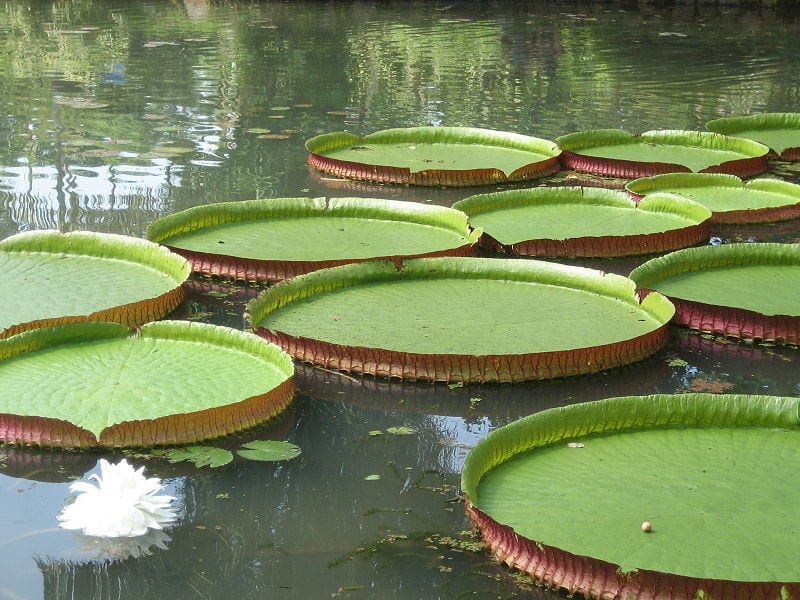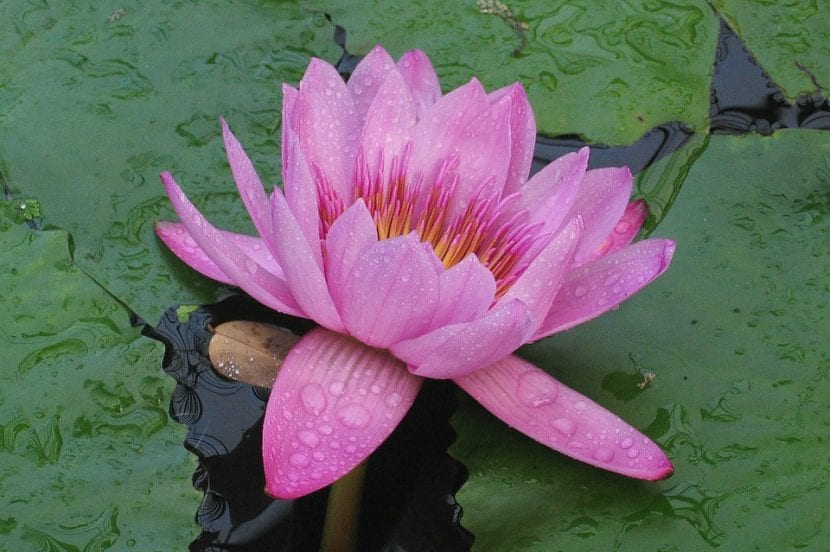
It is by far the largest aquatic plant in the world. In fact, often the birds and birds that are in the Amazon region, which is where it lives, use it as we use the roads. But it is not only a 'trail', but also a place to sunbathe, and a life preserver.
We humans see the victoria amazonica as an ideal option for a large pond; Although it is true that collectors who do not have that place ... well, we grow it in smaller containers 🙂. So If you don't have a macro-pond, don't worry, if you want… you can!
Origin and characteristics

Our protagonist is an aquatic plant native to the shallow waters of the Amazon River whose scientific name is victoria amazonica (o Royal victory). Its leaves are very, very large, up to 1 meter in diameter, and arise from submerged stems that are 7-8 meters long. The most surprising thing is that they can support up to 40kg of weight if it is well distributed.
The flower is one of the largest also of the plants that live in water: up to 40cm in diameter! It opens at dusk, and a smell very similar to apricot emanates from it. It lasts two days: the first night is white and is feminine; the next morning it closes a little to open again at night, but this time it will be pink and masculine.
What are their cares?

If you want to have a copy of Victoria amazonica, we recommend that you provide it with the following care:
- Location: outside, in full sun. It can give you a bit of shade, but only a few hours a day.
- Pond / Container Size:
- Pond: the bigger the better, but as you can see in the image above, it is not especially necessary that it be large either.
- Container: if you don't have a pond, you can grow it in wide buckets, or in large transparent plastic boxes without holes.
- Subscriber: it is important to use organic fertilizers, such as guano, especially if we have fish and / or other animals.
- Multiplication: multiplies by seeds in spring.
- Rusticity: it does not resist the cold. The minimum temperature that it supports is 15ºC. In the Mediterranean region it is grown as an annual.
What did you think of this plant?